Up Next

Ferrari and Red Bull dominated the first half of the 2022 Formula 1 season, with the Ferrari F1-75 and Red Bull RB18 proving to be the best interpretations of the new ground effect technical regulations.
But despite Red Bull’s big advantage in the championship and the two cars being very different, the technical and performance gap between them is almost nothing, with only the vicissitudes of reliability, accidents and bad strategy distorting the picture.
The two cars have a clear performance advantage over the rest but, despite fears coming into 2022 that the prescriptive regulations would allow for very few differences between cars, Red Bull and Ferrari have produced very different interpretations of the rules – and their cars produce similar laptimes in different ways.
The initial design concepts of Ferrari and Red Bull at the start of the season featured more differences than common solutions, especially when it came to aerodynamics. The visually obvious difference was the sidepods.
Red Bull opted for a more conventional design at the rear of the sidepods, but greatly advanced the radiator inlets to create a large air passage channel between the sidepods and the floor. Ferrari preferred for the air to pass above, with the famous ‘tub’ created by its scalloped bodywork.

What the two cars do have in common is the ability to generate grip induced by the efficiency of the venturi ducts, which are housed in the lower part of the floor.
Both – especially Red Bull – have produced cars that are not sensitive to changes in ride height and that perform well even if the car is not completely sealed to the ground.
By comparison, porpoising has limited other cars, particularly the Mercedes W13 thanks to it being designed for an optimal ride-height window with a low and flat trim.
As the 2022 season has progressed, the F1-75 and RB18 have evolved rapidly. Their development paths have been very broad despite the limitations of the cost cap, but as expected cars have converged towards common design choices and the solutions that bring the biggest performance advantages. It’s for this reason that Ferrari and Red Bull have begun to adopt similar aerodynamic solutions.
An obvious example is the double T-tray, first introduced by Aston Martin. This was brought in by Ferrari for the first race in Bahrain, then copied by Red Bull at Imola a month later, with almost all of the teams producing their own versions.
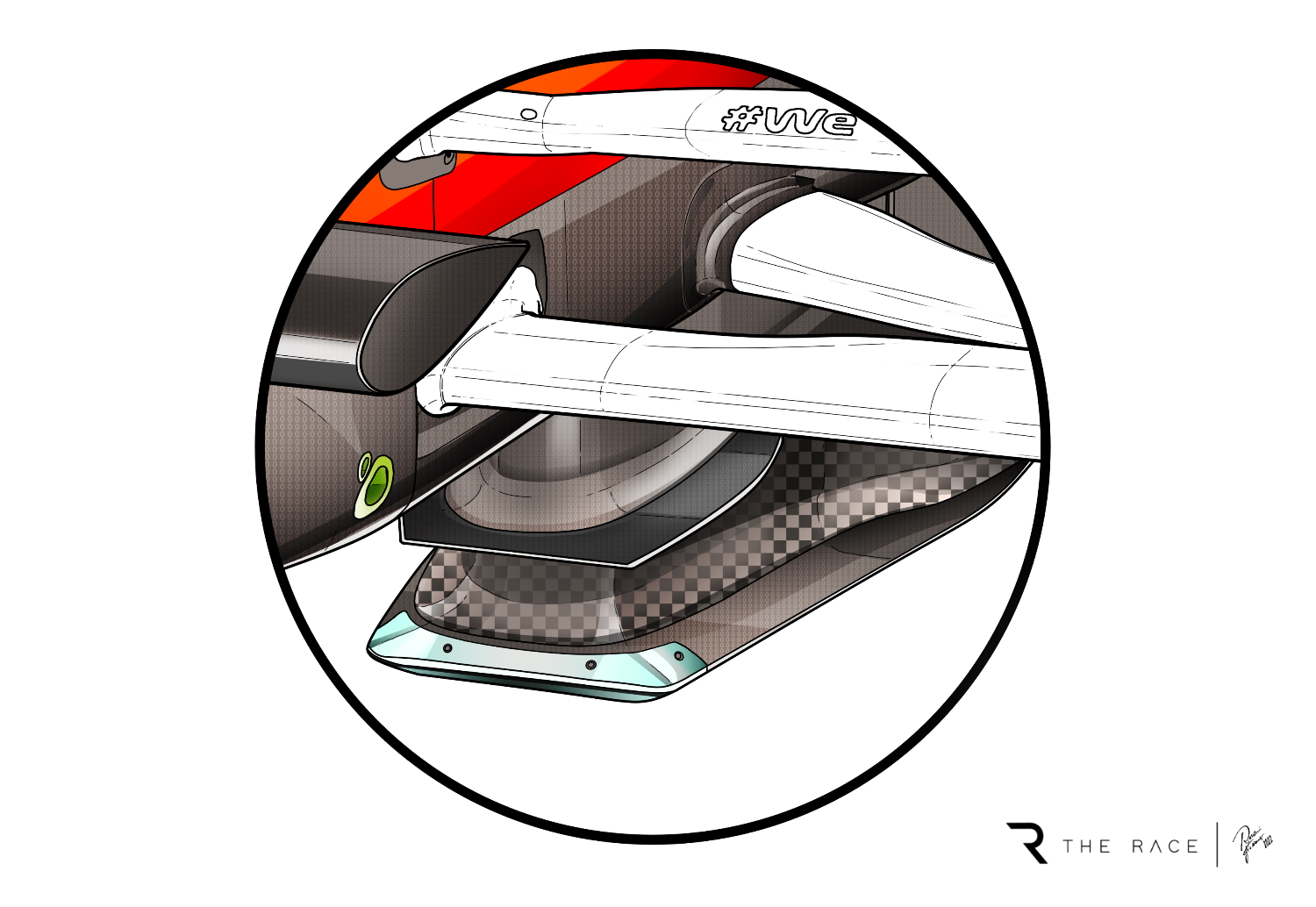
REDUCING THE WEAKNESSES
In the first phase of the year, the main focus for the teams – aside from upgrades – was troubleshooting the cars to reduce their weaknesses. In the case of Ferrari, the F1-75 was at a straightline speed disadvantage compared to Red Bull. But the Red Bull was a slightly more complicated car to set up, one that Max Verstappen wasn’t perfectly at ease with.
Ferrari modified its rear wing in Spain for a more efficient DRS when the flap was open. With the new Ferrari wings, the DRS chord has been increased to the detriment of a smaller mainplane. With the DRS closed, the overall load difference does not change, but when the flap is open the gap from the mainplane is wider, with the advantage of less drag.
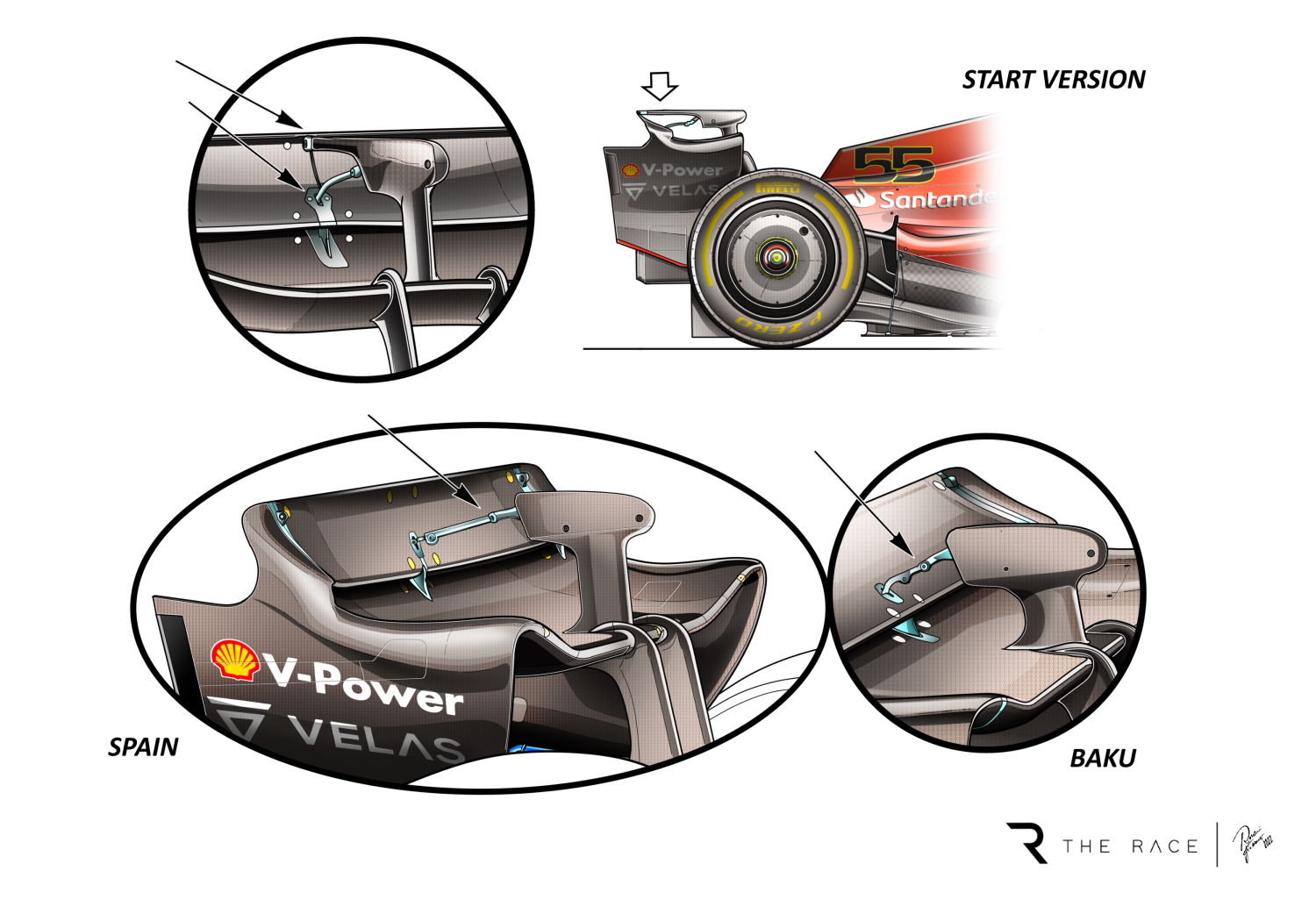
With the new family of post-Barcelona rear wings, Ferrari managed to reduce the speed advantage that Red Bull had in the DRS zones, a gap that was at times more than 15km/h (9mph).
Ferrari had also managed the porpoising problem more carefully, a problem Red Bull has not suffered from but that has not entirely disappeared on the F1-75. This led to revisions of the floor with a new outer fence, a new side edge, and also the lower part of the car.
At the rear, the definitive version was introduced in Spain, where in addition to the floor edge area, the lower part of the diffuser was been profoundly changed. To counter the aerodynamic stall of the floor, Ferrari decided to divert part of the flow in the outermost part through what is effectively a channel, implementing a kind of keel in the lower part of the diffuser that had already been glimpsed in Australia.
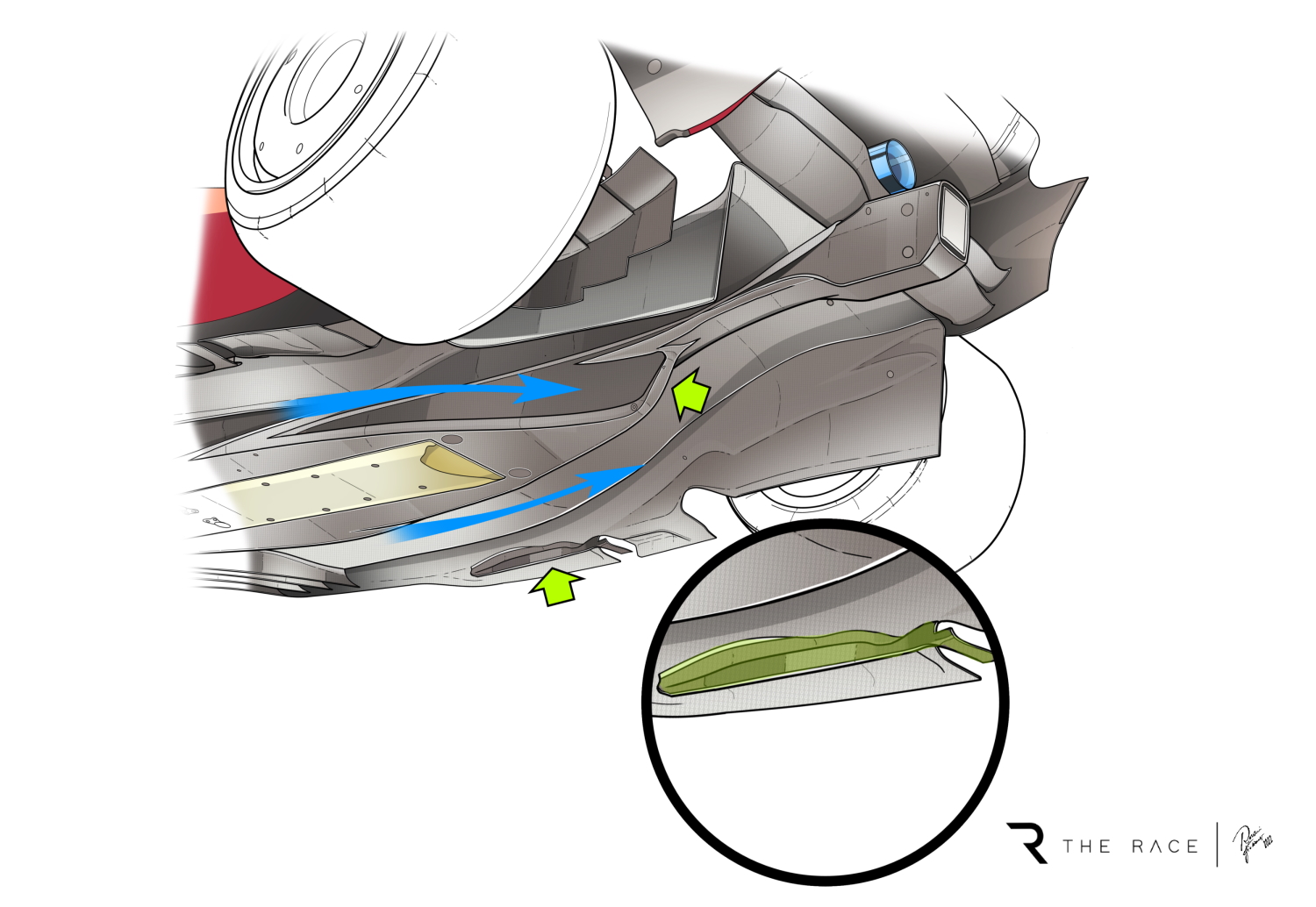
Red Bull initially focused on creating a less understeery car in order to increase the load on the rear without unbalancing the car. Another important focus was on weight reduction, while on the porpoising front Red Bull seemed the only team able to predict this phenomenon well in the winter simulations.
There were no huge upgrade packages for the RB18 until the Spanish GP, just a lot of small changes spread over the course of the opening races. Aside from the new sidepods introduced on the final day of testing in Bahrain (something the team kept aside), in Australia the front wing endplate was cut for weight.
After Imola, Adrian Newey and his team pushed hard to seek more performance from the floor, updating the RB18 in several areas. In Baku six weeks later, the venturi entrances were raised and set back, also in the rear area on the sides of the rear wheels.

Red Bull aggressive, Ferrari conservative
As F1 moved into the summer, the development battle heated up with Red Bull making more radical aerodynamic changes than Ferrari. While Ferrari didn’t want to upset a very well-balanced car, Red Bull was aggressive. There were also signs of further convergence between the two.
Red Bull’s first big package arrived at Silverstone, where Newey’s car radically changed at the rear. The engine cover took on a different shape to better manage the airflow that then passes to the area of the beam wing. For most of the races in this part of the season, Red Bull ran a single-element beam wing.
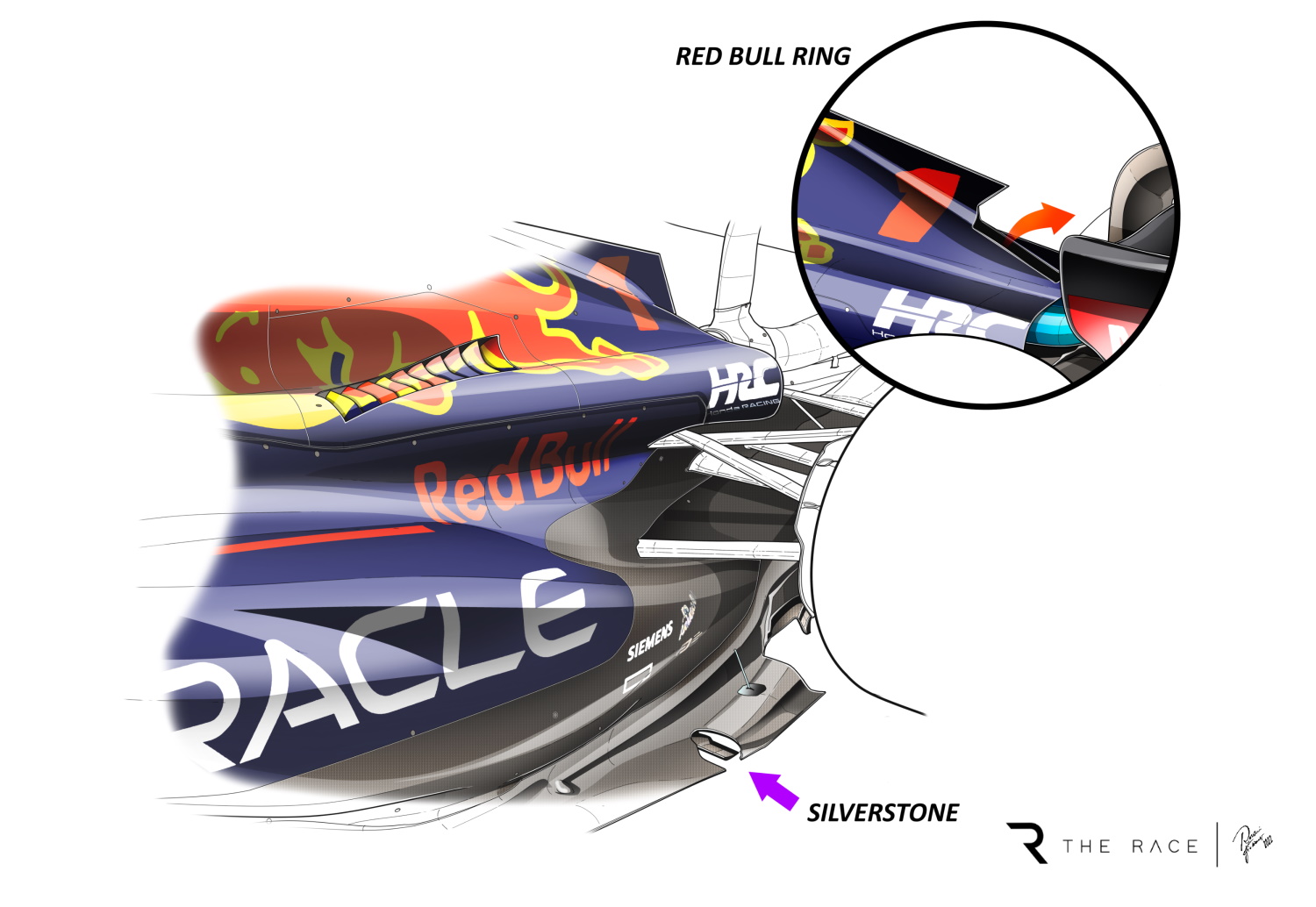
The team also updated the floor, introducing what was clearly a Ferrari-inspired anti-porpoising slot. However, in subsequent races Red Bull put that particular change aside.
Ferrari, on the other hand, brought its main upgrade of the summer to France. At Silverstone, there were small changes to the mirrors, to the engine cover, which was tightened around the exhaust, and to the undercut of the sidepods, which is now also narrower. This was to have less drag.
At Paul Ricard, with the new floor extensively revised at the front, the air inlet area was radically modified. In the innermost area, the inlet channel became wider, while in the outermost area Ferrari decided to sacrifice part of the flow in the venturi ducts to favour the passage in the upper edge of the floor.
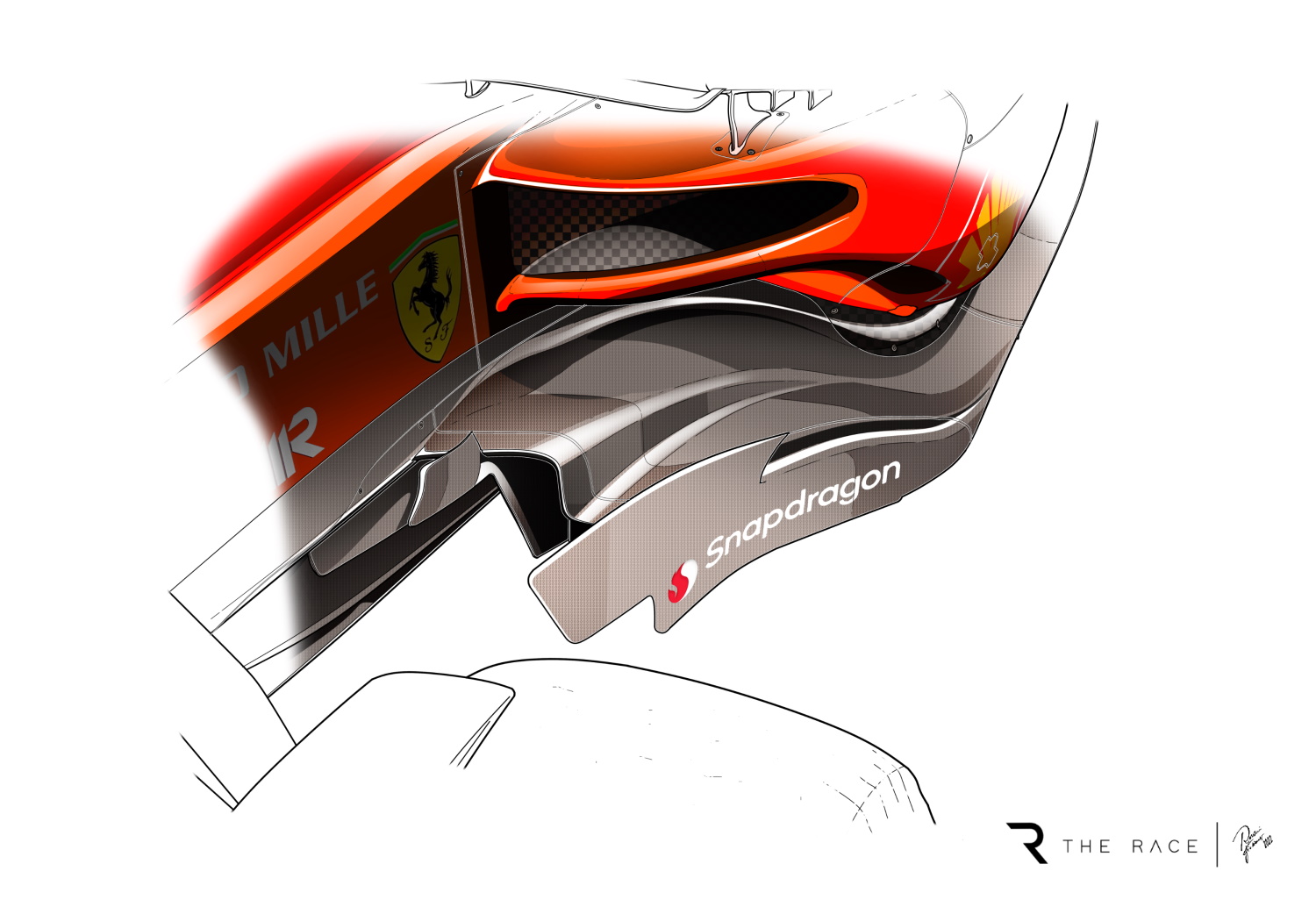
In this area, Red Bull has been widely active in Austria and France, continuing to develop the cars of Verstappen and Sergio Perez. The most obvious change around the entrance area of the floor was the abandonment of the double outer fences. At Paul Ricard, the fences became single and were subsequently stiffened in Hungary due to some structural problems that appeared during the French GP weekend.
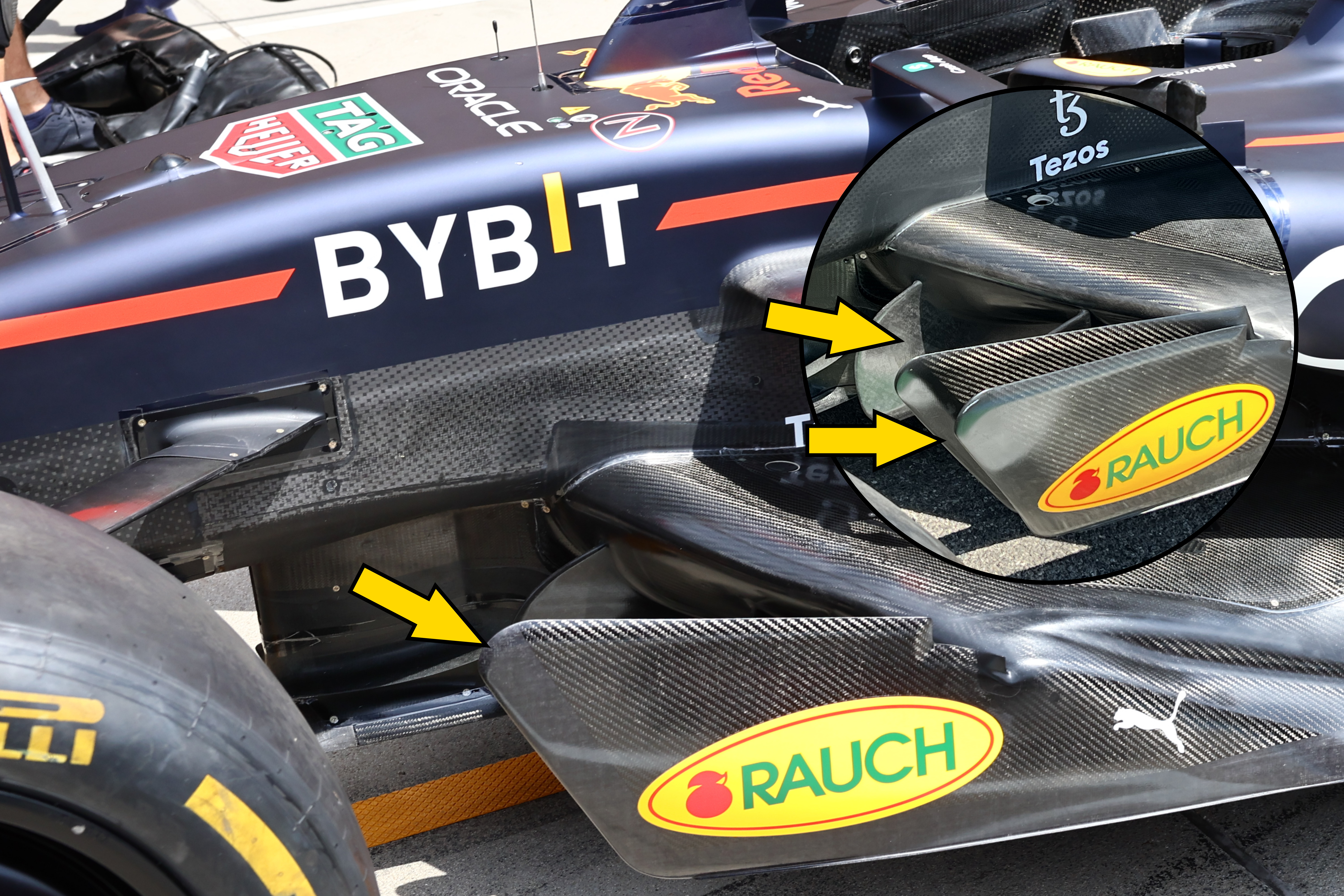
In Hungary, the last race before the summer break, Ferrari did not bring any updates. But Red Bull brought a radically revised beam wing compared to the old specification, making it much more similar to that of the other teams.
F1’s 2022 regulations don’t offer much freedom on the wings, but Red Bull had been the one outlier team with a very different beam wing from its rivals. With its Hungaroring specification, the RB18 became more aligned with the conventional philosophy, to work better with the engine cover introduced at Silverstone.
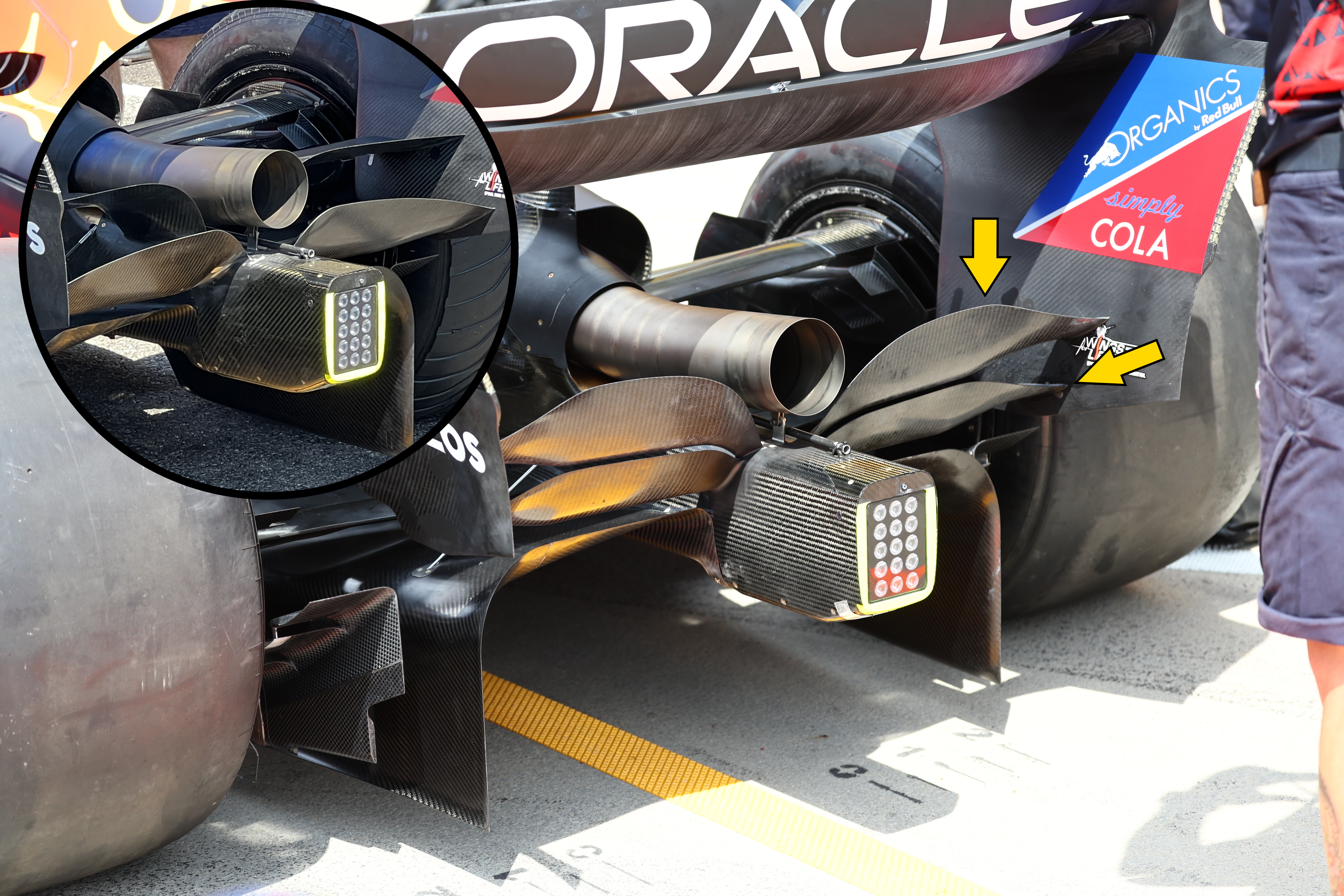
Now as the season resumes with the added consideration of the new measures around porpoising finally being introduced from Spa, the intrigue over which of Red Bull or Ferrari is actually fastest is going to continue through the development race even though the championship seems settled.



